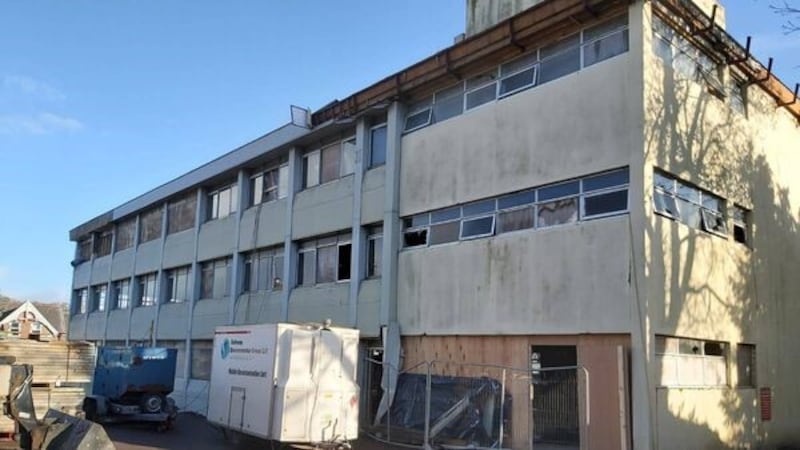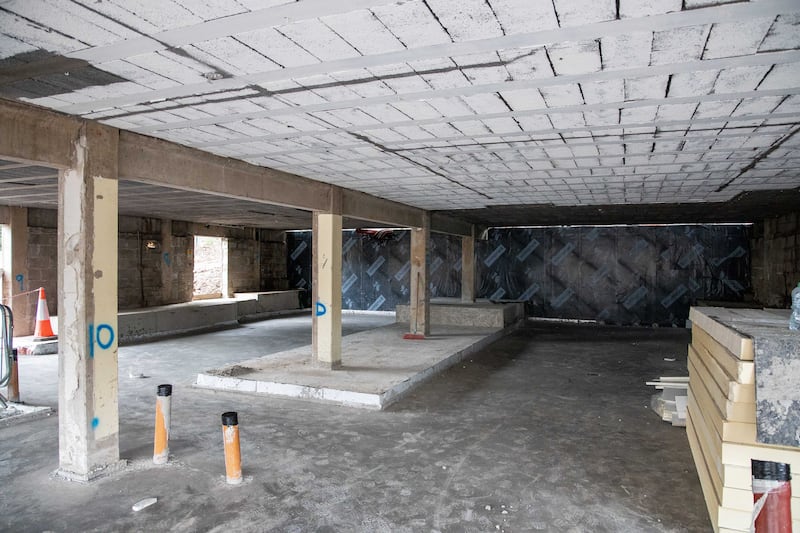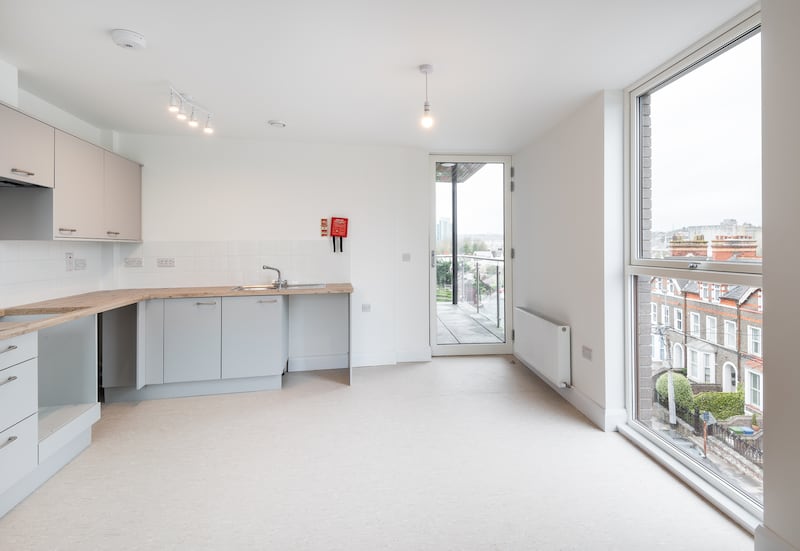For 11 years Helen Bygrove waited on Cork City Council’s housing list. Living in what she describes as a 13sq m rented apartment – or “a box” as she refers to it – the former schoolteacher was delighted to finally get the call recently for her first ever permanent home on the Blackrock Road, near where she grew up. The 72-year-old’s new home is no ordinary development however, but one of a handful of former office block conversions in the country.
“It’s been transformative,” Bygrove says from her one-bed apartment which she moved into recently. “Some people have said to me that they’ve been in tents that are larger [than my previous apartment]. This space feels spacious, airy, extremely well-designed, there’s a wonderful flow between the rooms – a lot of it is open plan. It’s designed for people to live in, rather than people having to live in little boxes, and this psychologically is wonderful.”
Springville House, located where the Old Blackrock Road meets the new one, was formerly the headquarters of Pettit Consulting Engineers but was out of use when it was acquired by developers in 2017 who worked with the council and Tuath Housing Association to deliver 35 social housing units.
Springville, while one of a few developments of its kind in the State, may be an indicator of what’s to come. Last month, Minister for Housing Darragh O’Brien wrote to his Cabinet colleague Minister for Enterprise Simon Coveney to say a “surge in office construction”, higher than that of the Celtic Tiger, combined with post-pandemic working practices, may produce an “oversupply of office space”.
Hybrid work among white-collar employees has left a hole in the middle of some towns and cities across the country and abroad. In the Canadian city of Calgary, local authorities are rapidly implementing a 10-year plan where as much as two million sq ft of unused office space will be converted into residential units.
Here, Mr O’Brien said “underutilised office space… could become vibrant apartment blocks in the heart of our cities”, and he suggested he would consider planning exemptions to expedite such developments. So what can be expected from these developments?
Walking into Springville, there are virtually no remnants of the building’s former life.
“It’s a marvellous example of how an industrial building can be transformed into a really cosy and comfortable space,” says Bygrove. “I never imagined that such places existed. Even in the most expensive private accommodation I’ve seen nothing of this calibre.”
As residents move in, many of whom are on the council’s Rightsizing Scheme – aimed at moving older people into what the local authority deems to be more appropriately sized properties – there are plans afoot to set up a residents’ committee, and two resident landscapers hope to create a communal garden beside the bungalow units built on site.
Tuath housing officer Sonia Sheehan calls Springville “the Brown Thomas of our developments”, pointing to the wooden veneers in the elevator’s interior.
Four-bed houses in the area go for anywhere from €600,000-€2 million. One just a stone’s throw from Springville is on the market for €995,000, while a five-bed further down the road is up for €1.05 millon. Bygrove on the other hand pays between €40 and €50 per week for her one-bed apartment, which is means-tested based on her income.
“It’s a highly sought-after [area] in Cork,” says Ann O’Mahony, a director at Sherry FitzGerald Cork.
A third of Springville was funded through a loan from the Department of Housing, with the balance coming from funding from the Housing Finance Agency.
Tenants have been steadily moving into Springville House in recent months, and the building has come a long way from its previous life. Significant works were required to strip back the building to its core structural elements before the space was divided up into individual units. The finished product today with its Ber A-rated units, spacious balconies and wide windows making for light-filled and energy-efficient apartments is almost unrecognisable from its original look.
One prospective tenant from the area was viewing a one-bed unit. Strolling into the bright kitchen and on to the balcony, he looked around with a sense of excitement. “I’ll take it,” the 69-year-old said promptly, refusing an offer to look at other units. He said he had waited years on the council’s housing list.
“Comparing the old building with the new building is a total transformation,” he said. “It’s beautiful compared to what was there previously. It was an eyesore. To be moving into such a beautiful apartment in the area that I came from – it’s like winning the Lotto.”

Fiona Egan, communications and policy manager at Tuath, says: “We always say the greenest buildings are the ones that already exist. This is already in a residential area; the building was already here so there’s no impact on the local area and it’s close to amenities.”
Ireland’s housing association sector provided 4,949 new social and cost rental homes in 2022. Tuath Housing delivered 1,983 of these homes representing 40 per cent of the sector’s overall delivery. Tuath has been at the forefront of office conversions, with another large-scale development of 86 apartments in Park West Plaza, Dublin 12.
“We’d love to do more office to residential conversions,” says Egan. “They’re always in areas of prime locations which is good when social housing need is high… It’s really important that we’re doing this alongside new-builds. The housing crisis can’t be solved by one method of delivery, it has to be varying.”


Both local authorities and the Department of Housing have been keen to engage with these developments, and fresh enthusiasm from Government is “brilliant”, she says, adding that more empty office blocks need to be identified.
While developments like Springville will barely make a dent in State’s huge housing challenge, resident Helen Bygrove hopes to see it replicated widely.
“One is conditioned by the physical space one lives in,” she says. “There are social implications from living in whatever space. I would really strongly encourage the decision makers to develop nationwide. It is simply rather limited thinking that the traditional way is the only way.”
This article was amended on June 19th, 2023










